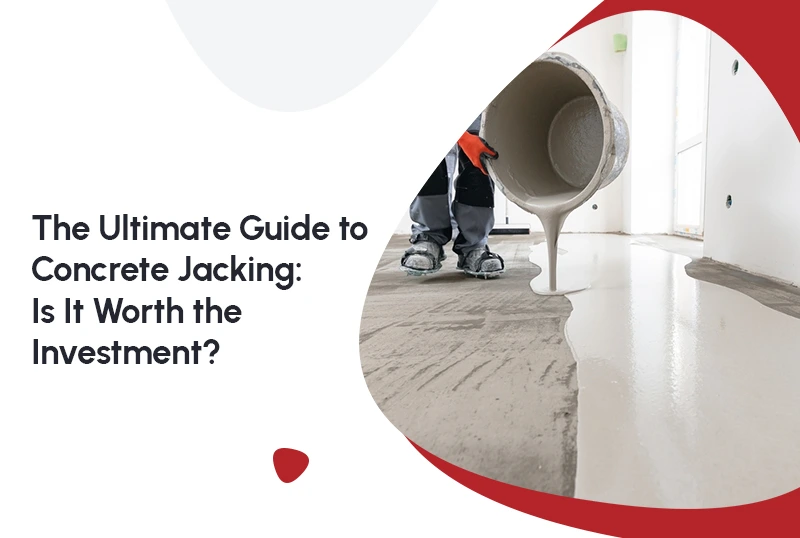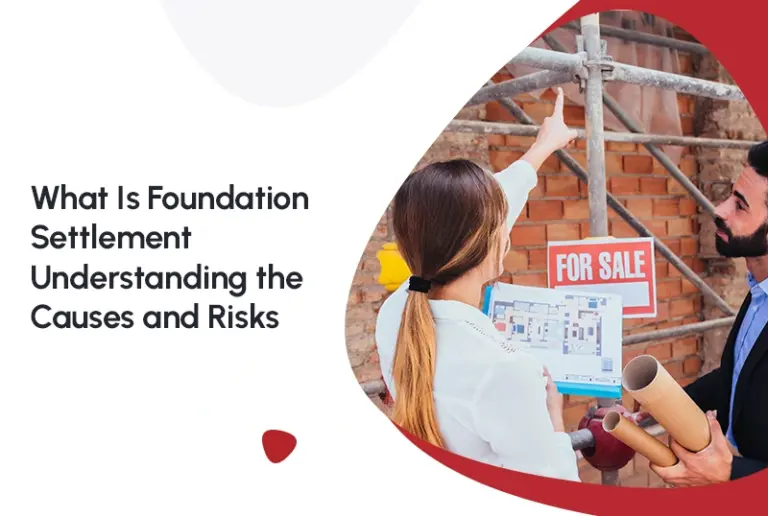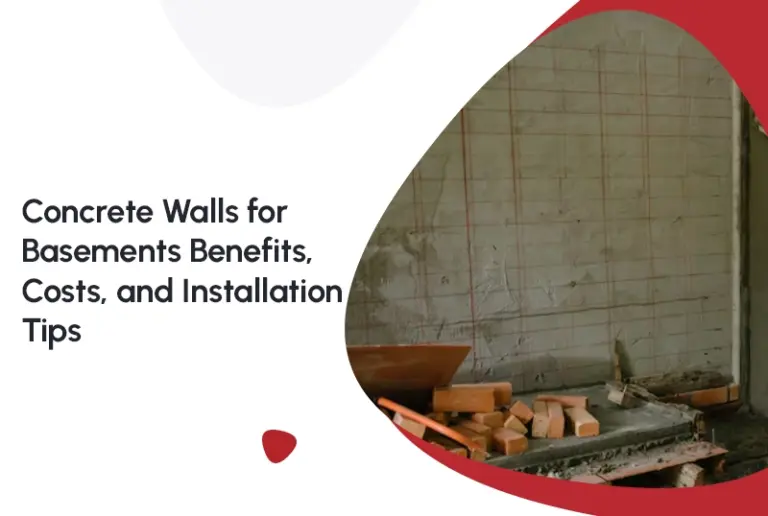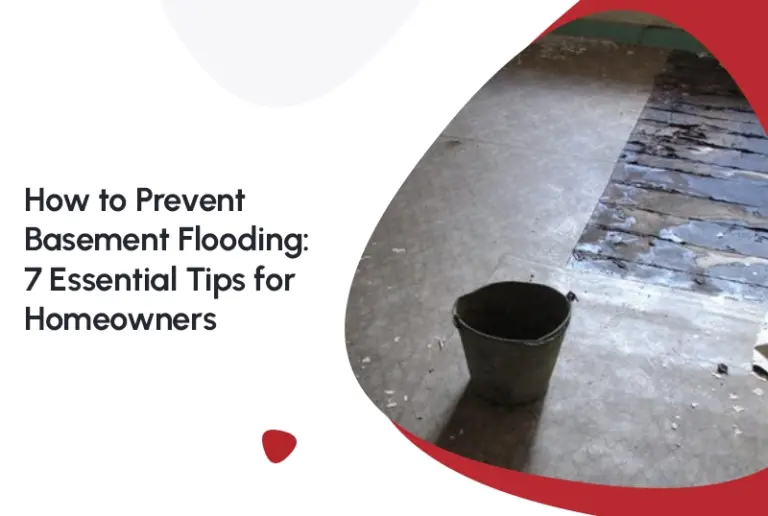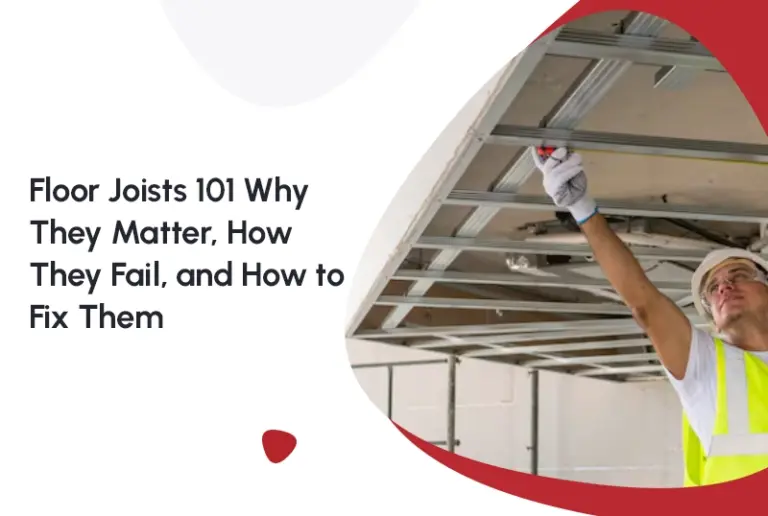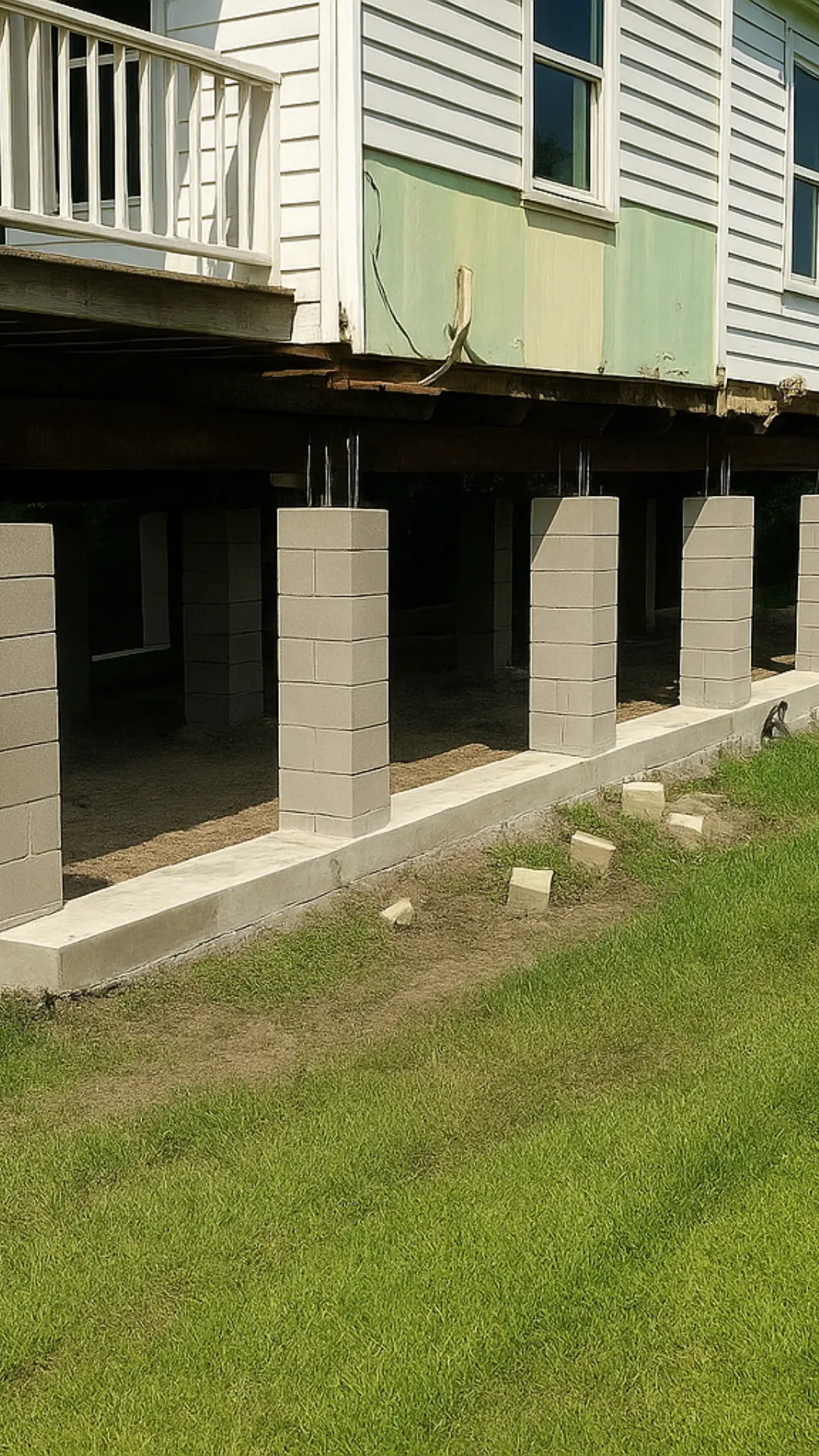Concrete surfaces don’t stay perfect forever. Over time, sidewalks, driveways, patios, garage floors, and even house foundations can sink, crack, or become uneven due to a variety of issues like soil erosion, water infiltration, tree roots, or poor soil compaction. When these problems arise, property owners often face a major decision: replace the concrete entirely or choose a faster and more cost-effective solution known as concrete jacking.
In this comprehensive guide, we’ll cover everything you need to know about concrete jacking, including how it works, when it’s the right choice, the costs involved in 2025, the pros and cons, and how to choose the right contractor. By the end, you’ll have a clear understanding of whether concrete jacking is worth your investment.
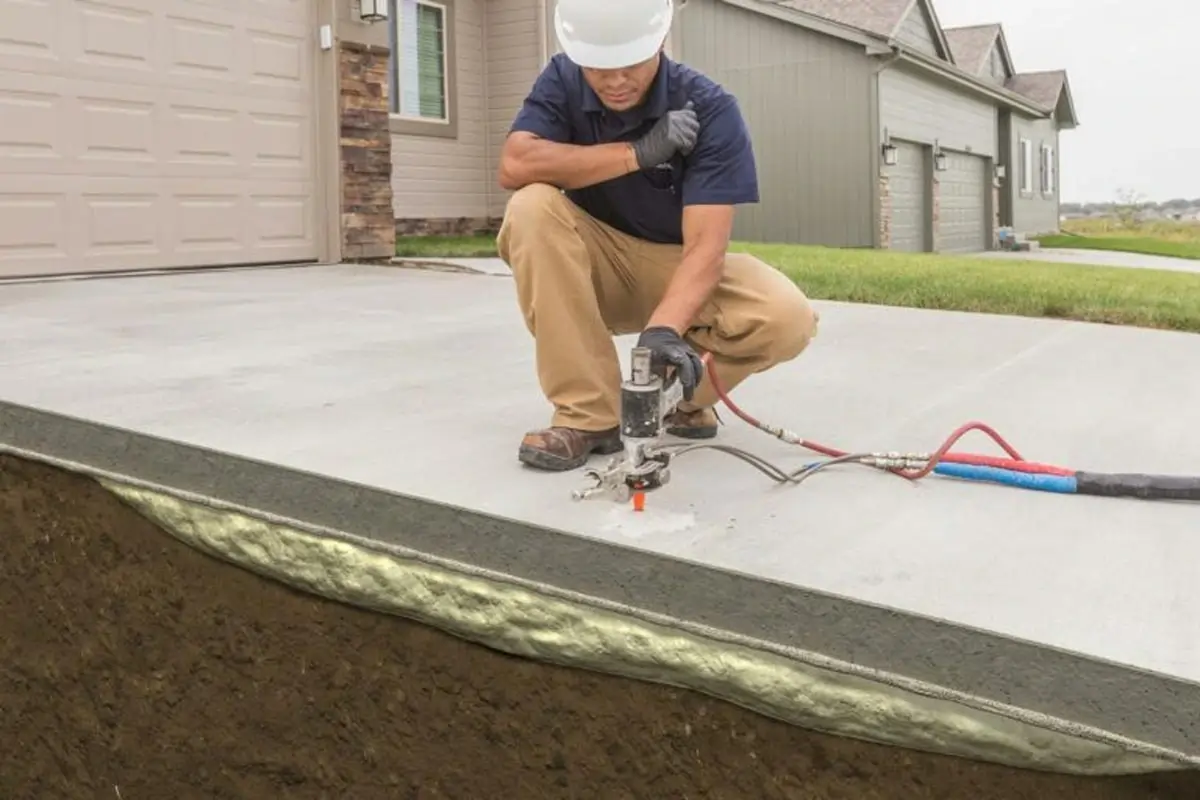
What Is Concrete Jacking?
Concrete jacking, also called slab jacking, mudjacking, or concrete leveling, is a technique used to lift and level sunken or uneven concrete surfaces. Rather than removing and replacing the entire slab, a special material is pumped beneath the slab to fill the voids and raise it back to its original position. This technique is commonly used for house leveling, driveway repairs, patios, garage floors, and even interior concrete slabs. It’s a minimally invasive method that’s faster and more affordable than full replacement.
The mixture traditionally consists of a slurry of cement, water, soil, and sand. A more modern method, known as polyurethane foam lifting, uses high-density foam to achieve the same purpose with better durability and cleaner application.
This technique is most commonly used for:
- Uneven sidewalks or walkways
- Sinking driveways
- Sloped patios or pool decks
- Uneven basement and garage floors
- Minor house foundation settlement issues
Unlike foundation replacement, concrete jacking is minimally invasive, affordable, and often completed within a few hours.
How Does Concrete Jacking Work?
The process begins with a careful assessment of the affected concrete slab. This method is commonly used in Concrete Slab Foundation Repair to restore structural integrity without full replacement. Once the problem areas are identified:
- Drill Access Holes: Small holes (usually about 1 to 2 inches in diameter) are drilled into the concrete at strategic points.
- Inject the Material: A lifting compound is pumped beneath the slab through the holes. This can be a traditional mudjacking slurry or modern polyurethane foam.
- Lift and Level: As the material expands or fills voids, it lifts the slab from beneath. Technicians monitor the lift in real-time to ensure evenness.
- Patch and Finish: Once leveled, the holes are filled with cement and the surface is cleaned.
The entire process typically takes between 1 to 4 hours depending on the size and complexity of the job. In most cases, the surface can be walked on immediately and driven on after 24 hours.
Benefits of Concrete Jacking
1. Cost-Effective
Concrete jacking usually costs 30% to 50% less than full slab replacement, depending on your location and the size of the area.
2. Quick Turnaround
Most concrete jacking projects are completed within a single day. You can typically walk or drive on the surface by the next day.
3. Non-Invasive
There’s no demolition, hauling, or heavy equipment needed. This reduces mess, time, and stress.
4. Environmentally Friendly
By lifting and restoring existing concrete, you avoid sending large slabs of concrete to the landfill. Foam methods are especially clean.
5. Improves Curb Appeal and Safety
Uneven surfaces are not only unsightly but also dangerous. Leveling removes trip hazards and improves property value.
Concrete Jacking vs. Concrete Replacement
Concrete replacement becomes necessary when the slab is severely damaged — crumbling, spalling, or cracked through. However, for surfaces that are in good condition structurally but have sunk or settled, jacking is the more practical choice. For instance, pier & beam foundation repair often involves much more extensive and costly structural work, while concrete jacking focuses on surface-level correction and stabilization. The two solutions address different issues, but jacking is ideal for cosmetic and light structural corrections.
Want more information? Read here: What is Pier and Beam: A Comprehensive Guide to This Foundation Type
| Factor | Concrete Jacking | Concrete Replacement |
|---|---|---|
| Cost | Lower (avg $800–$2,500) | Higher (avg $4,000–$8,000) |
| Time | 1 day | 3–7 days |
| Disruption | Minimal | High |
| Longevity | 8–15 years (or more) | 20–40 years |
| Eco Impact | Low | High |
Concrete jacking is ideal for cosmetic repairs and slight unevenness. Full slab replacement is better when structural integrity is compromised.
When Should You Consider Concrete Jacking?
Here are common scenarios where concrete jacking is your best bet:
- Sidewalks that are uneven or cause tripping hazards
- Driveways that have sunken in sections
- Garage or basement floors with minor settlement
- Pool decks that have shifted or sloped
- Concrete slabs with drainage issues
- Foundation slabs that show slight sinking without structural cracks
If you notice any of these signs, address them promptly. Early intervention can save money and prevent further foundation issues down the line.
Concrete Jacking for Foundation Repair
Concrete jacking isn’t just for flatwork. It can be used in certain cases of concrete slab foundation repair or to correct minor pier & beam foundation settlement. If your home shows signs of mild foundation settling, concrete leveling can help without the cost of full underpinning.
Cost of Concrete Jacking in 2025
Prices vary depending on your location, the method used, and job size. Here’s a breakdown:
Average Costs:
- Mudjacking: $5–$10 per sq. ft.
- Polyurethane Foam: $10–$25 per sq. ft.
Influencing Factors:
- Area Size: Larger surfaces have a lower cost per square foot.
- Depth of Settlement: Deeper voids require more material.
- Accessibility: Difficult-to-reach areas may increase labor costs.
- Material Choice: Foam is more expensive but lasts longer and creates smaller injection holes.
While polyurethane is more costly, it provides a longer lifespan and is often the preferred method for visible or high-traffic areas.
Is Concrete Jacking a Long-Term Fix?
When done correctly, yes. Concrete jacking typically lasts 8 to 15 years, depending on:
- Soil conditions beneath the slab
- Climate and freeze/thaw cycles
- Drainage and moisture management
To maximize lifespan, ensure that the underlying cause of settlement (like poor drainage or unstable soil) is addressed. In some cases, drainage improvements or soil stabilization treatments may be recommended. Concrete leveling through jacking is not a one-size-fits-all solution. It’s crucial to diagnose the underlying cause of the issue to determine the best method for long-term stability.
Choosing the Right Contractor
Here are tips for selecting a reliable concrete jacking contractor:
- Check licenses and insurance
- Ask about experience and materials used
- Request photos or case studies of past work
- Inquire about warranties (1–5 years is standard)
- Avoid extremely low bids
A good contractor will evaluate your situation carefully, recommend the right jacking method, and help you understand both short- and long-term implications.
Additional Tips for Preventing Settlement
To prevent the need for jacking or repeat repairs:
- Ensure your downspouts drain water away from your foundation
- Re-grade the soil around your home to slope away
- Avoid planting trees too close to concrete slabs
- Monitor cracks annually and address them early
Conclusion
Concrete jacking is an affordable, fast, and environmentally friendly solution for uneven or sunken concrete. It saves time, reduces waste, improves safety, and restores functionality to driveways, sidewalks, patios, and even parts of your foundation.
While not suitable for severely damaged or crumbling slabs, it’s an excellent option for early-stage settlement and minor structural leveling. In 2025, with rising construction costs, concrete jacking offers an appealing balance of value and performance.
If you’re seeing signs of settling or sinking around your property, don’t wait for the problem to worsen. Consider scheduling an inspection and getting a quote for concrete jacking—it might be one of the smartest investments you make in your property this year.
FAQs
1. What is the process of jacking concrete?
The process of jacking concrete, also known as slabjacking or mudjacking, involves lifting and leveling sunken concrete slabs by pumping material beneath them. First, small holes are drilled into the affected area. Then, a mixture—typically made of cement, sand, soil, and water—is injected under pressure into the void beneath the slab. As the mixture fills the gaps, it raises the concrete back to its original level. Once lifted, the holes are sealed and the surface can be used almost immediately after curing.
2. What material is used for slab jacking?
Slab jacking typically uses a grout mixture made from cement, sand, and water, sometimes combined with additives for extra strength and durability. In modern methods like polyjacking, a high-density polyurethane foam is used instead. This foam expands rapidly, fills voids efficiently, and offers longer-lasting support compared to traditional mudjacking materials. The choice of material depends on soil conditions, load requirements, and project budget.
3. Is concrete jacking worth it?
Yes, concrete jacking is usually worth it for most homeowners. It is a cost-effective and quick way to fix uneven concrete slabs, driveways, patios, and sidewalks without the need for full replacement. The process is minimally invasive, requires little downtime, and restores both safety and curb appeal. It typically costs 30–50% less than replacing the entire slab, making it a smart investment for long-term durability.
4. What are the disadvantages of concrete leveling?
While concrete leveling is effective, it has a few downsides. Traditional mudjacking can add significant weight to the soil, which may cause re-settling over time. The process may not be ideal for areas with poor drainage or weak subsoil. Additionally, mudjacked surfaces might not last as long as those repaired with polyjacking, which uses lighter and more stable foam material. Still, proper soil preparation and sealing can minimize these issues.
5. Which is better, mudjacking or foam?
Foam jacking (polyjacking) is generally better than traditional mudjacking for most modern repairs. Polyurethane foam is lightweight, cures quickly (within minutes), and provides long-lasting stability without adding stress to the soil. Mudjacking, though more affordable, can re-settle over time because the grout material is heavier. Foam jacking also works better in areas with poor soil conditions or heavy load-bearing needs.
6. How long does concrete jacking last?
Concrete jacking can last anywhere from 5 to 20 years, depending on the materials used and soil stability. Traditional mudjacking has a shorter lifespan due to the heavier fill material, which can compress over time. Polyjacking, however, can last decades since the foam is water-resistant, non-biodegradable, and won’t erode. Proper maintenance, drainage, and sealing will further extend the lifespan of the repair.
7. Is mudjacking a permanent fix?
Mudjacking is not typically a permanent solution, but it can last 10 to 15 years with proper soil conditions. Because the mixture used is heavier, it can sometimes lead to further settling if the soil beneath remains unstable. For a more durable, long-term fix, polyurethane foam jacking is often preferred since it’s lighter, more resistant to moisture, and provides longer-lasting lift and stability.
8. Is polyjacking better than mudjacking?
Yes, polyjacking is considered superior to mudjacking in most cases. The polyurethane foam expands quickly, fills even the smallest voids, and cures within minutes, allowing immediate use of the area. It’s also waterproof and more resistant to erosion. Although polyjacking costs more upfront, it offers longer durability and less risk of resettling compared to mudjacking, making it a better long-term investment.
9. How long does polyjacking last?
Polyjacking can last over 20 years when properly installed. The polyurethane foam used in the process doesn’t absorb water or break down over time, maintaining its strength and stability even in harsh soil conditions. Unlike traditional mudjacking, which can deteriorate due to moisture or soil movement, polyjacking remains solid and provides a permanent solution for uneven concrete.
10. What is the best method for lifting concrete?
The best method for lifting concrete depends on the project size and conditions. For small residential jobs, polyjacking is the most effective and durable method because it offers precision, speed, and long-term results. For larger or budget-conscious projects, mudjacking is still a reliable option. Both techniques restore safety and appearance, but polyjacking provides superior performance with less environmental impact and minimal disruption.
